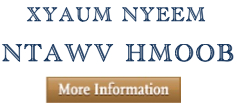History in China
IN THIS SECTION
The Myth of Sonom, the Hmong King
By Robert Entenmann, Ph.D. St. Olaf College
Hmong Studies Journal, Volume 6, 14 Pages
Abstract
This paper discusses the inaccurate designation of Sonom, an important figure in 18th century
Chinese history as a “Hmong king.” The myth of Sonom as a Hmong historical figure has gained
currency through its inclusion in several widely read written works related to Hmong-Americans
published over the past decade. The article clarifies the actual historical identity of Sonom and the
likely route by which he became misidentified by some writers as being of Hmong origin.
Introduction
Over the years many of my Hmong students at St. Olaf College have known about “Sonom,” the “Hmong king,” and have believed that the Hmong in eighteenth-century China lived in a Hmong kingdom.1 Most of them have learned about Sonom from Anne Fadiman’s The Spirit Catches You and You Fall Down, certainly the most widely read book on the Hmong experience in America. In turn, Fadiman’s account of Hmong history relies heavily on Keith Quincy’s Hmong: History of a People, the only easily available English-language study of Hmong history.2
Unfortunately, the belief that a Hmong king named Sonom ruled over a Hmong kingdom is not borne out by the historical record. Sonom existed, but he was not Hmong, nor were the people he led. To deconstruct this error, let us begin by examining the accounts in Fadiman and Quincy.
Fadiman writes: “In 1772, a small army of Hmong squashed a large army of Chinese in eastern Kweichow by rolling boulders on their heads while they were marching through a narrow gorge. The Manchu emperor, Ch’ien-lung, decided he would be satisfied with nothing less than the extermination of the entire Hmong tribe, a goal whose unsuccessful pursuit ultimately cost him twice what he had spent conquering the entire kingdom of Turkestan. Ch’ien-lung
This incident is the subject of QuincyÂ’s vividly written first chapter, entitled “ChÂ’ienlung’s Revenge.”4 The chapter begins as follows:
“The Year was 1776. After a three-year campaign in the field, General Akoui entered Peking at the head of his victorious army with 250 prisoners in tow. Though weary, the general had good reason to be pleased that day. Among his prisoners was Sonom, the twenty-one-year old Hmong king of greater Kin-tchuen, as well as the young king’s immediate family and the principle members of his court.
“The Manchu emperor, Ch’ien-lung, had demonstrated his appreciation by traveling ten miles from the imperial capital to greet the returning general. For even though Akoui’s victory was minor in comparison to many of the empire’s other triumphs, it was one the emperor had anticipated with relish. Now with the Hmong king in his grasp, Ch’ien-lung would have his revenge. It would be swift and terrible.”
READ FULL ARTICLE FROM HMONG STUDIES JOURNAL







